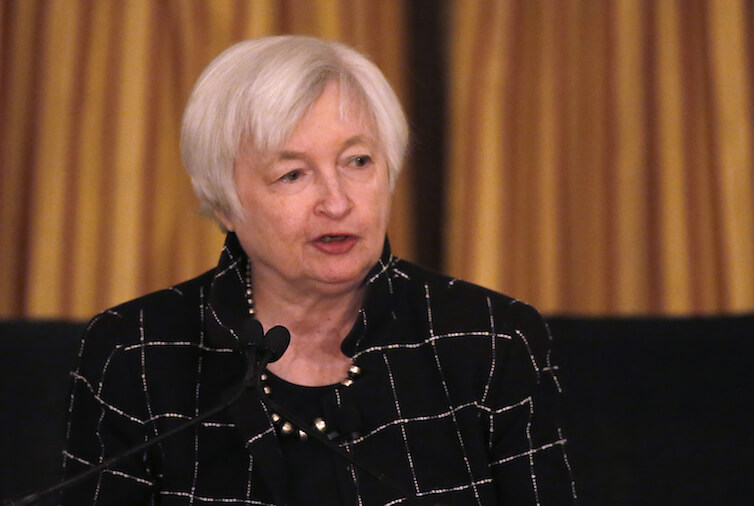Changing sources of inflationary pressures in the United States

What drives inflation in the United States today is a $19 trillion question. The Federal Open Markets Committee is wrapping up its March meeting and is almost certain to announce an increase in short-term interest rates. This move will come even though inflation, measured by the central bank’s preferred measure—the Personal Consumption Expenditures index—has been below the Fed’s 2 percent target for almost five years. What view of inflation and its determinants would lead to such a decision? Does that view make sense? Perhaps not.
The Federal Reserve’s outlook on inflation seems to be best explained by the Phillips Curve, or more precisely by the so-called expectations-augmented Phillips Curve. That curve shows an inverse relationship between unemployment and inflation: If unemployment goes down, then inflation goes up and vice versa. The augmented version accounts for inflation increasing or decreasing if households, businesses, and investors change their expectations of future inflation. This view squares with a prominent speech by Fed Chair Janet Yellen, in which she lays out a Phillips Curve view for an increase in rates as the unemployment rate hovers near some estimates of the long-term unemployment rate. The Federal Reserve’s view, in short, is that inflation is tied to changes in unemployment.
New research challenges the view that changes in the unemployment rate are an important indicator of future inflation rates. The paper by a group of five economists presented at the U.S. Monetary Policy Forum earlier this month finds that while unemployment has a statistically significant impact on inflation, the size of the impact is not very large. Changes in inflation expectations end up not having a statistically significant impact at all.
This is not to say that inflationary expectations are unimportant. As economists Stephen Cecchetti of Brandeis University and Kermit Schoenholtz of New York University’s Stern School of Business (two of the paper’s authors) note in a blog post, this result actually shows the importance of inflationary expectations. By credibly convincing the public that it will keep inflation low and stable, the Federal Reserve itself may have flattened the Phillips Curve. A flatter curve would mean that changes in the unemployment rate would result in much smaller changes in inflation.
One key policy implication of the current Phillips Curve is that policymakers today should be more concerned with the level of wage growth, not the changes in wage growth, when thinking about inflation. This “accelerationist” take on inflation, however, might not be the correct one at this point. In fact, the current relationship is a bit of a return to the Phillips Curve of the 1960s.
The paper by Cecchetti, Schoenholtz, and their three coauthors also has another important implication. The one thing they do find that influences inflation in the period since 1984 is past inflation. In other words, there’s a slowly moving trend of inflation, and that trend is going to be a good estimate of what happens next. A slow-moving trend would mean that to get inflation back to the Fed’s 2 percent target in the long run would require letting inflation overshoot 2 percent by a bit. It would also mean that pulling on the brakes with inflation below 2 percent makes it less likely inflation will get back to its target.
An acclerationist Phillips Curve view of inflation would have policymakers think that inflation is bound to increase significantly soon, with the unemployment rate so low. In other words, it’s a view that would have the Federal Reserve increase rates despite weak wage growth and an inflation rate that’s not yet at target. This view might be validated by events, but there’s quite a bit of cause for skepticism.
Correction: Edits to the fourth and fifth paragraphs to clarify what the retro feature of today’s Phillips Curve is.
